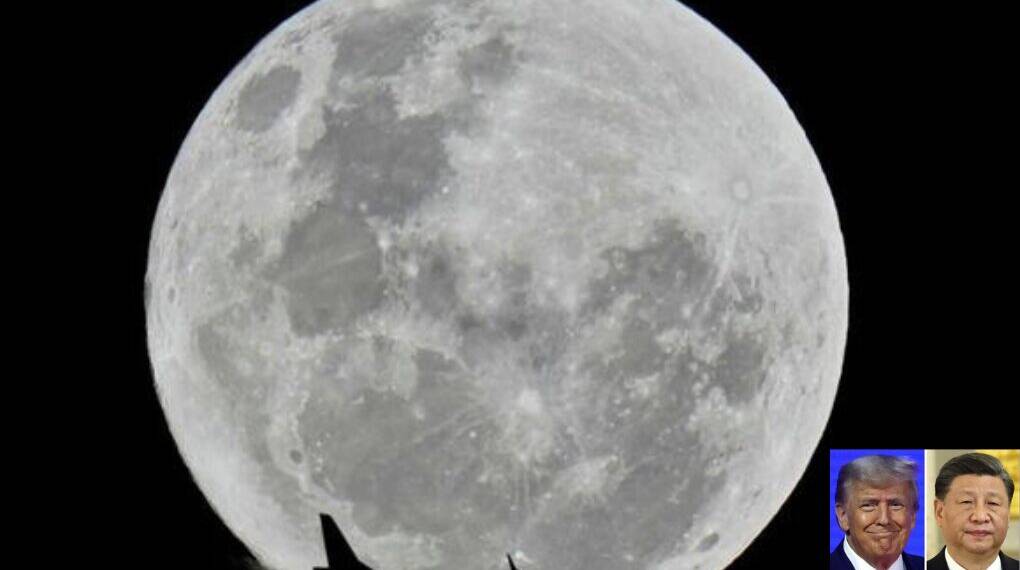The United States is preparing to take a major leap in the new era of space competition—by installing a nuclear reactor on the Moon by 2030. The announcement by NASA’s interim administrator Sean Duffy signals a significant escalation in the rivalry between Washington and Beijing over who will dominate the Moon’s most valuable real estate: its south pole.
This move isn’t just about science—it’s about power, resources, and influence in a domain where early movers can set the rules for decades to come.
Why the Moon’s South Pole Matters?
Certain regions of the Moon, particularly near the south pole, are uniquely attractive for building a permanent human base:
Water ice deposits in permanently shadowed craters can be converted into drinking water, breathable oxygen, and even rocket fuel.
Continuous sunlight in nearby elevated areas can provide a steady source of solar energy—though not everywhere and not year-round.
The combination of resources and stable conditions makes this location the lunar equivalent of prime real estate.
Duffy put it bluntly: “We have ice there. We have sunlight there. We want to get there first and claim that for America.”

Why Nuclear Power is the Key?
While sunlight may be abundant in some areas, the Moon experiences long stretches of darkness—the lunar night lasts around 14 Earth days. During these periods, solar panels can’t generate electricity, and batteries alone aren’t a sustainable solution for a long-term base.
Roger Myers, a space-based nuclear power expert, explained:
“The sun sets on the Moon for two weeks. You have to have another source of energy. The sun and batteries do not work. We’re going to have to have nuclear power.”
Nuclear fission reactors offer:
24/7 power regardless of sunlight.
High energy density for running life-support systems, communications, and scientific experiments.
The ability to support industrial-scale operations, such as mining and manufacturing.
NASA is aiming to deploy a 100-kilowatt reactor, generating roughly the amount of electricity a typical US home consumes in three and a half days—enough to power essential base operations on the Moon.
The US-China Lunar Race
United States: Through its Artemis program, NASA plans to return astronauts to the Moon and establish one or more south pole bases by 2030. However, Artemis 3, the first planned crewed landing, has been delayed to at least 2027, with SpaceX’s Starship lander still under development.
China: Working with Russia and other partners, Beijing aims for a crewed lunar landing by 2030 and plans to build the International Lunar Research Station by 2035, complete with its nuclear power system. Unlike the US, China has consistently met its recent space milestones.
This competition isn’t just about prestige—it’s about long-term access to resources and strategic positioning for future deep-space exploration.
Is a Nuclear Reactor on the Moon Legal?
Some may see a nuclear reactor in space as provocative, but experts stress it’s legal under international law.
Michelle LD Hanlon, Professor of Air and Space Law at the University of Mississippi, notes:
The Outer Space Treaty prohibits national ownership of celestial bodies, but it does not forbid building infrastructure.
UN Principles of 1992 recognize the legitimate use of nuclear power in space for peaceful purposes where solar power is insufficient.
While this isn’t a territorial claim, the first nation to deploy such infrastructure could influence how others operate—functionally shaping norms without legally “owning” the territory.
In other words, the first mover may not hold the Moon, but they will set the tone for future activity there.
NASA’s Path to Lunar Nuclear Power
The idea isn’t new. Since 2000, NASA has invested over $200 million into small, lightweight fission power systems:
In 2023, three $5 million industry contracts explored 40-kilowatt designs capable of running for 10 years—enough to continuously power 30 households.
In 2024, NASA officially committed to using nuclear power for Mars missions, identifying it as essential for human exploration beyond Earth.
The upcoming lunar reactor will be a testbed not only for Moon settlements but also for future crewed missions to Mars, where sunlight can be unreliable and dust storms can last for months.
Strategic Implications
If the US succeeds in placing the first operational nuclear reactor on the Moon:
It will gain a technological edge in space-based infrastructure.
It could define operational norms for power-sharing, safety protocols, and lunar industrial activities.
It will strengthen its geopolitical position in the broader space race, potentially influencing how and where other nations can operate.
For China, matching or surpassing this milestone would reinforce its reputation as a reliable and disciplined space power, capable of competing head-to-head with NASA.
The US plan to build a nuclear reactor on the Moon is more than a technological project—it’s a strategic move in a high-stakes geopolitical race. While no one can legally own the Moon, the first country to establish reliable, large-scale power there will effectively control how future lunar operations are conducted.
The coming decade could decide not just who gets to the Moon first, but who shapes humanity’s future in space.







